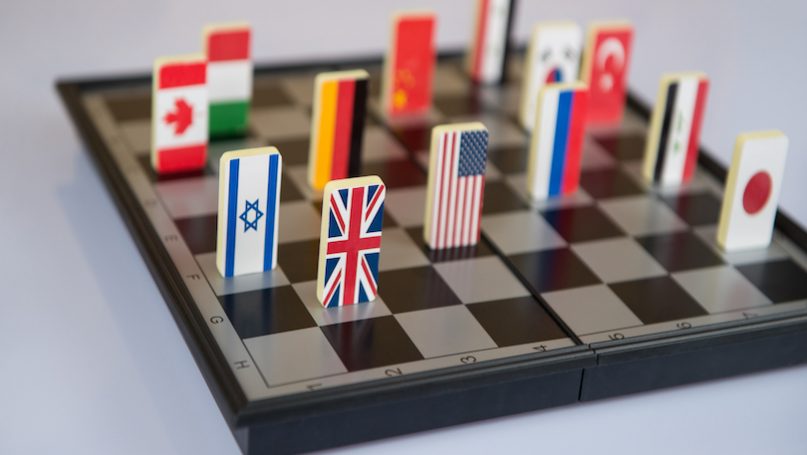
This feature is part of the online resources to accompany the textbook Foundations of International Relations.
There are many different ways to visualise where power lies within the global system. One way to do so is to consider different types of ‘polarity’ and match these to historical time periods, or to the present day. For example, the Cold War represented a global system of bipolarity. A bipolar system is one where two powers dominate. In that case, it was the United States on one side, and the Soviet Union on the other – with each side assembling their allies into their sphere of influence. When the Cold War ended, a debate raged over how to describe the system. Some maintained that it was a system of unipolarity – as there was only one superpower remaining, the United States. This idea was captured by Charles Krauthammer when he described it as a ‘unipolar moment’ in which the United States stood in an unprecedented historical situation where one state was significantly more economically, militarily and politically powerful to the extent that it would take a generation or more for a competitor of equal stature (a peer) to emerge.
Others have argued that the world has entered a period of multipolarity. Multipolarity is the historical norm as it describes a system with multiple competing powers. The last defined multipolar system ended shortly after the Second World War, which had left the European powers depleted – giving way to the Cold War bipolar system. Multipolarity today can be represented not just by rivalling states as it was in the past, but by the emergence of ideas of global governance through international organisations (such as the United Nations) which compete with, and often constrain, the power of states.
Some suggest that bipolarity may return with the growing rivalry between the United States and a rising China shaping the twenty-first century. Others have suggested that a system of tripolarity may emerge, adding a resurgent Russia (or perhaps a different rising power) into the United States-China picture. While these perspectives draw on historical patterns for their inspiration, today’s system can also as one of multiplexity – a new type of order in which several systems exist independently at the same time, but not necessarily in conflict, much like the idea of different movies screening under one roof in a multiplex cinema.
A multiplex world order is not anchored by a hegemon. Instead, it is culturally and politically diverse yet economically interconnected, where challenges to peace, security and welfare are increasingly transnational. It involves a dispersal of power and influence amongst both established and emerging powers, small states, global and regional bodies and non-state actors. For example, we can consider the role of the United States, which has exercised a form of hegemony through its spearheading of the ‘liberal’ international order post-1945, through the metaphor of a cinema showing only one movie at a time – one that was scripted, produced and directed by the United States, with itself as the lead actor. In the multiplex world, by contrast, the American movie is joined in a modern multiplex theatre by a variety of others, especially cinema from the Global South, with different plots, producers, directors and actors each playing simultaneously on other screens. Multiplexity therefore represents diversity and plurality, rather than homogeneity, whilst also recognising the interdependence at play as each ‘movie’ depends on the good functioning of the multiplex theatre itself (which can be seen as representing world order at large).
Multiplexity is different from multipolarity, which refers mainly to a distribution of material capabilities. The vision of a multipolar world order today might simply add several emerging countries, such as China and India, or regional powers like Nigeria and Turkey, as new ‘poles’ to the list of established Western powers. But it does not capture the broader complexity of interactions that define the contemporary global system. Multiplexity entails much more than the mere distribution of power. It is also about distribution of ideas, cultures and civilisations.
Text adapted from McGlinchey, Stephen. 2022. Foundations of International Relations. London: Bloomsbury.
Below is a collection of multimedia resources that help unpack, and explain the importance of polarity within the global system.